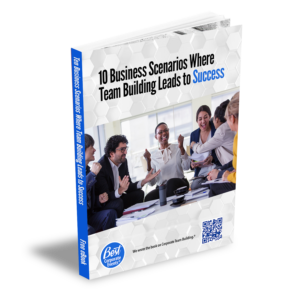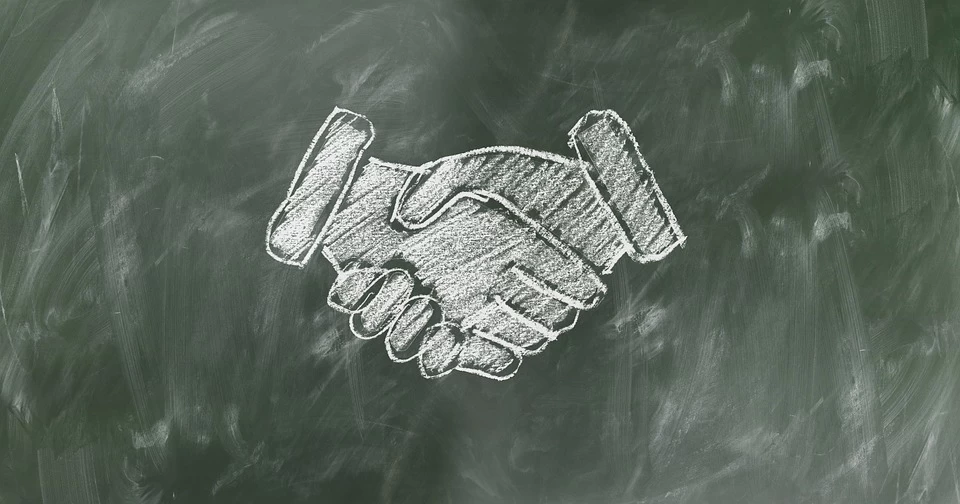While the frantic post-pandemic job shuffling has subsided and quit rates have returned to pre-pandemic levels, the long-term trend of slower growth in the workforce means competition for talent will continue for years. This makes it imperative for organizations to create a workplace culture and environment that employees want to join, stay with, and are engaged in. Those that don’t, risk declines in performance and competitiveness.
This shouldn’t be surprising, and yet recent research shows that employee stress remains high, while global employee engagement and employee well-being measures continue to plumet.
According to the State of the Global Workplace: 2024 Report
“In 2023, global employee engagement stagnated, and overall employee wellbeing declined. While both measures are at or near record highs, their lack of improvement is notable, as they follow multiple years of steady gains. The result is that the majority of the world’s employees continue to struggle at work and in life, with direct consequences for organizational productivity.”
A mere 23% of employees are engaged at work, and 34% of employees reported thriving in their overall wellbeing. Numbers like that should spur leaders across business, government, and academia to action. But before developing strategies, it’s vital to understand what’s causing these high levels of stress and low levels of engagement.
Why Are Employees Dissatisfied and Disengaged?
The bad news for employers is that today’s worker shortage isn’t just a temporary blip caused by the pandemic, but is part of a longer-term trend. The good news is that the underlying reasons for worker dissatisfaction are within the control of leaders.
In a series of studies going back to 2012, Pew Research has found that while the specific reasons given by employees for voluntarily leaving their jobs has changed somewhat over time:
“When you look at the patterns and trends across the last decade, the big picture becomes clear—employees have realized that they are no longer willing to work in roles and for employers that consistently compromise their universal needs.”
The universal needs at the root of the labor crisis are identified as:
- Foundation/function need: Compensation, benefits such as health care, child care issues, excessive hours, etc..
- Value need: People quitting because they didn’t feel important, they felt disrespected, a lack of support, favoritism, and not being recognized for their contribution.
- Growth need: Lack of challenge, not growing professionally, career development, and no opportunities for advancement.
Team building, training, and professional development programs can help, particularly with “value” and “growth” needs. As noted in our previous post on leadership training, “When employees see that their company is making an investment in them and helping prepare them to advance in their careers, it increases satisfaction, engagement, and loyalty.”
Here’s how.
Recruitment vs Retention: Understanding the Balance
Recruitment and retention strategies are often discussed in tandem, but it’s crucial to understand the difference between the two. Recruitment focuses on attracting new talent, while retention emphasizes keeping current employees satisfied and engaged. Both are essential for building a successful workforce.
Effective Strategies for Employee Recruitment and Retention
Prospective employees will check out your company online before you even know they exist. Sites like Glassdoor and Reddit give them a glimpse into your company culture, leadership, compensation practices, and more, provided by your current (or former) employees.
When jobseekers come in for interviews and tours, they will assess your workplace environment. Do your people seem happy and collaborative in their work, or stressed and harried? Are the people they meet with friendly and welcoming, or do they treat the interview like an imposition? Or worse, an inquisition?
Team cohesion and management practices set the tone, and both can be improved through team building and professional development programs. Integrating team building into your new employee orientation process helps build trust, creates shared experiences, and accelerates new employees’ productivity. This strategy can also support employee retention by ensuring that the new employee’s first impression is a positive one.
How to Recruit and Retain Employees: The Role of Team Building
As any type of leader in your organization—manager, supervisor, executive, team leader—it’s vital to have open communication and dialogue with those who report to you. You need to know how things are going; not just in the tactical sense (is this project on track?) but also how things are going with each specific team member on a personal basis. Do they feel secure? Is their work meaningful? Are they optimistic about their professional future?
Again, team building and leadership development programs can help break down barriers and improve that communication. But in terms of enhancing employee retention, they can do much more. Team building programs specifically help employees feel:
- Valued: In the words of Roy Charette, a leader in the fields of team building and professional development training, and managing partner at Best Corporate Events, “We run team building activities that let people shine. People take turns feeling valued. They smile a lot in these workshops. We introduce activities designed to showcase people’s competence and ability and productivity, events that bring out the best in people.”
- Motivated: Roy points out that in workshops and programs, participants are so busy focusing on the task at hand, laughing, and high-fiving each other that they forget to look at their phones for an hour…or two, or three. He challenges team members, “”If you can get this excited, energized, and motivated around an activity where there’s really nothing at stake, except for fun and team building, shouldn’t you be able to carry some of that over into your workplace where everything’s at stake: food on your table, a roof over your head, supporting your family?”
- Passionate: Participants discuss how they can support each other, position each other for success, and move from competition to collaboration in the workplace in the same way they did during their team building exercise. The emotional impact is even more powerful when that activity has a corporate social responsibility (CSR) component. CSR team building activities such as a Bike Build Donation® or Build-a-Wheelchair® event help employees to feel more connected to their communities as well as to each other, increasing loyalty by creating emotionally impactful shared experiences.
Professional development programs for leaders help them carry those outcomes back into the workplace, to create an environment that fosters those same feelings. They learn what they can and should be doing as managers to lead high-performing teams in ways that don’t lose the “connectedness” developed through team building activities. Growth opportunities, along with evidence of strong employee retention, tend to find their way back to prospective hires through word of mouth and online employer reviews, helping you recruit the best talent along the way.
Retention and Recruitment Strategies: Building a Plan
Creating a robust recruitment and retention plan involves understanding the needs and desires of your workforce. Implementing team building programs can help employees feel valued, motivated, and passionate about their work. Programs that incorporate Corporate Social Responsibility (CSR) components, such as a Bike Build Donation® or Build-a-Wheelchair® event, create emotionally impactful shared experiences that increase loyalty and engagement. Below are steps that will lead you to success:
- Assessment: Start with a needs assessment to identify the specific goals and desired outcomes of your team building programs. This involves gathering input from employees at all levels to understand their needs and expectations. Use surveys, interviews, and feedback forms to collect this information.
- Customization: Tailor team building activities to meet the unique needs of your organization. Based on the assessment, design activities that address specific challenges and goals. For instance, if communication is a major issue, choose activities that focus on improving communication skills. If team cohesion needs work, select programs that encourage collaboration and trust-building.
- Participation: Encourage leaders to participate in or observe team building activities to identify strengths and areas for improvement. Leaders play a crucial role in setting the tone for team building efforts. Their participation not only shows commitment but also helps them understand the dynamics of their teams better. They can identify high-performing individuals, potential leaders, and areas that need improvement.
- Follow-Up: Use debrief sessions to process experiences and integrate lessons learned into everyday work practices. After each team building activity, conduct debrief sessions where participants can reflect on their experiences. Discuss what went well, what challenges were faced, and how these learnings can be applied in the workplace. Create action plans to implement these insights and ensure they are followed through.
Building Strong Relationships for Employee Retention and High Performance
Strong working relationships are key to employee retention and high performance. Employees who have poor relationships with peers or feel their supervisor is treating them unfairly will start looking for new opportunities elsewhere. Positive and collaborative workplace relationships are crucial for maintaining a satisfied and engaged workforce.
Team building activities help build and strengthen those relationships. The experiences are positive and designed to foster collaboration, to enable each team member to bring unique strengths to help achieve the objective. These activities create opportunities for employees to bond in a stress-free environment, enhancing their ability to work together effectively.
“We’re not putting people into a situation where they will need to deal with conflict resolution,” says Roy, “unless that’s what the workshop is about.”
“Our 100-plus workshops are very positive and engaging,” he adds. “They bring about the best examples of how we interact with each other. We have great communication, we share laughter, and we position others for success. We celebrate each other’s accomplishments. There is recognition, acknowledgement, and value.”
The Best Programs for Attracting, Retaining, and Engaging Employees
Choosing a team building program or professional development workshop starts with an assessment. Managers also often ask if it’s better for them to participate in the team building activity or to observe it from the outside.
“I normally say, ‘If you participate, that will have an impact, but you don’t have to participate in the whole event,’” says Roy. “I can explain the activities and then based on what they’re looking for, tell them which activities they should step away from, which ones they’re going to want to see from the outside because they’ll love what they see.”
That approach works well with programs that have “pause” points built in where participants can be debriefed and process the experiences, such as Competition to Collaboration®. But in programs like Build-a-Guitar® or SmartHunts® (high-tech scavenger hunts), all participants are involved from start to finish.
Leadership and professional development programs such as the DiSC Profile Workshop, Myers-Briggs Type Indicator (MBTI) Training, Developing Emerging Leaders, and Emotional Intelligence Training help managers bring some of the collaboration and communication benefits of team building programs back into the workplace.
Half of all Best Corporate Events team building programs use iPads for participants to take photos, record videos, and answer trivia questions among other activities. This provides the ability for participants to look back at those activities later on, enhancing the value of the shared experience.
“Quite frankly,” Roy summarizes, “all of our programs allow for everyone to feel good, to shine, to feel connected, and to have fun with each other. Having fun, feeling connected, and laughing with each other can have amazing impacts on employee retention, loyalty, and engagement.”
Ready to Enhance Recruitment and Retention with Team Building
The bad news is that a tight labor market and competition for talent will be with us for several more years. The good news is that most of the factors driving employee turnover and improving employee retention are within management’s control.
As noted in Entrepreneur, “The reality is that there’s no such thing as a labor crisis right now if you have employees who are happy, engaged and loyal…(and) other people actually want to work for your organization (which happens when you gain a reputation for employees whose universal needs are supported through working with you).”
Among the top reasons employees voluntarily leave organizations today are that they don’t feel valued, recognized, or connected, and don’t see opportunities for advancement.
Team building and professional development programs can help on all of those fronts. They provide recognition and build relationships. Investing in team building activities and leadership training demonstrates to employees a commitment to their career advancement, enhancing both recruitment and retention.
Virtually any type of team building or training program will ultimately help with recruiting and retaining employees and fostering their relationships. Team building activities build recognition and a sense of connectedness through shared experiences. Leadership development programs help managers bring some of the enthusiasm and collaboration fostered by team building events back into the day-to-day work environment, to help build a culture of high performance.
Best Corporate Events offers a variety of programs tailored to enhance employee recruitment and retention strategies. From team building activities that create shared experiences and foster team cohesion, to leadership development workshops that equip managers with the skills needed to maintain a positive and productive work environment, Best Corporate Events provides comprehensive solutions to help your organization thrive in a competitive labor market.






